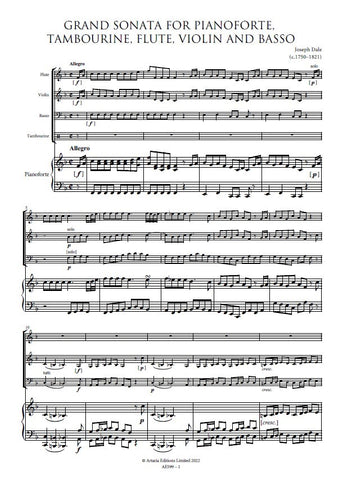Description |
Steibelt, Daniel (1765-1823)
|
||||||||||||||||
Details |
The plethora of works written with parts for tambourine at the turn of the nineteenth century suggest a close-knit relationship between women musiciansand dance. The role of the tambourine in Georgian high society is reasonably well documented. The dance-based compositions highlight the growing trend for genteel society “to embrace both music and dance as conceptually flexible mediums".The tambourine seems to have acted as a bridging point between energetic, social, even slightly flirtatious activity and passive, recreational drawing-room music. The instrument, if only in a modest way, represents a shift in the expected social etiquette for young girls at balls and other formal gatherings. This close-knit relationship between dance and the tambourine can be found in Daniel Steibelt’s adapted version of his own ballet La Retour du Zephyr for piano, violin and tambourine. An 1819 obituary in The Quarterly Musical Magazine and Review states that La Retour du Zephyr was originally composed as a one-act ballet during Steibelt’s second long-term stay in Paris, where it was successfully premiered at the Opéra on 3 March 1802. The ballet was Steibelt’s last major work before returning to London 19 days later. The cut-down version for piano, violin and tambourine found in this edition would have appealed to the domestic market in Britain enabling a broader range of customers to become familiar with Steibelt’s latest works in the comfort of their own home. |
||||||||||||||||
Score Preview |
Loading...
Error














